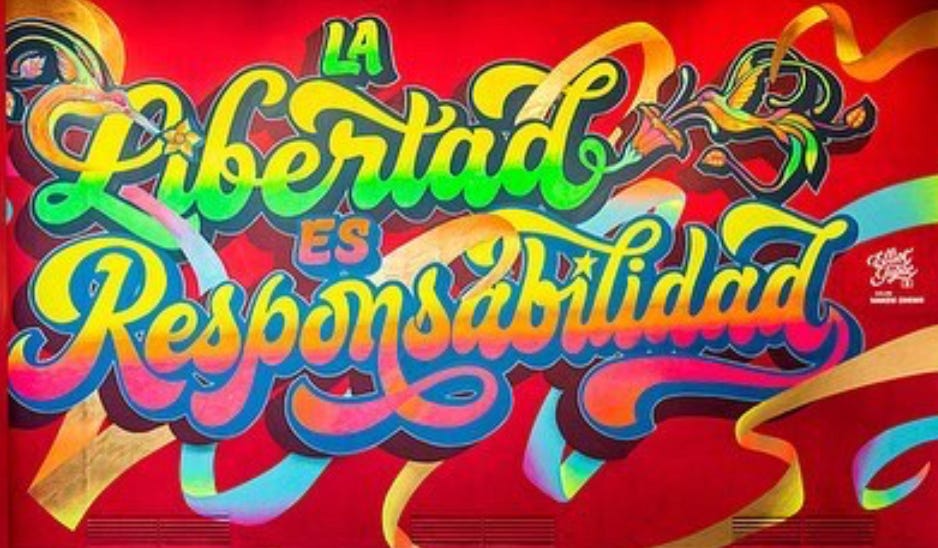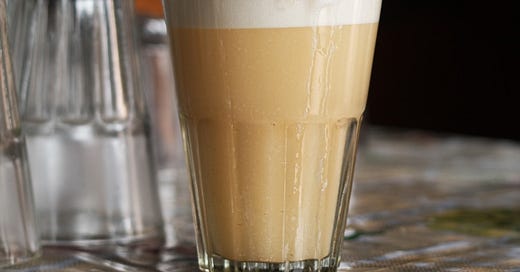My Andean ancestors imbibed chicha de jora (corn beer) and chicha morada (purple corn drink) in daily life and for special ceremonies. But throughout Peru, the term “chicha” also refers to a lively musical genre and the colorful street art closely associated with it. This multifaceted chicha culture connects the coast, Andes, and Amazon regions because everywhere there’s drink there’s music.
The Beer
For Whetstone Journal, I wrote about The Spirits of the Andes, and how thousands of years ago Andean communities used germinated corn to make ancestral chicha de jora beer. Chicheras—women brewers that have passed on generational knowledge from mother to daughter for millennia—mill, boil, and strain germinated corn before fermenting it in chomba earthenware vats. Served in a large caporal glass, the chicha de jora beer is still fermenting when you drink it.
“It’s a really nice, unfiltered, wonderful light sour, with a lot of chewiness and body to it, like a big wheat beer, with a light frothiness to it.” — Juan Mayorga, Cervecería del Valle Sagrado founder.
Like many foods of the Andes, the beer has made its way to Lima, Peru’s coastal capital, while in the Amazon, locals make chicha with cassava or yuca instead of corn.
The Drink
Chicha morada is a traditional non-alcoholic drink that families from Lima to the Andes mountains make with a maiz morado (purple corn) elixir, lime juice, sugar, spices, and fruits. Corn is one of the primary foods that my Inca ancestors cultivated, and purple corn is rich in antioxidants. Chicha morada is so popular that all corner markets in Lima carry packets of chicha morada powder mix.
Since I live in the Pacific Northwest, I wanted to use local ingredients to make a drink that honors chicha morada—presenting: chicha de blueberry. Blueberries have the same deep purple color as maiz morado and are also rich in antioxidants. Chicha morada’s aromatics are infused into the syrup with cinnamon, cloves, and orange peel. The vibrant color of the drink celebrates the summer season, and the garnish of a lime round, fresh mint, and blueberries on a toothpick give the drink a cocktail vibe.
Chicha de Blueberry
Blueberry Purée
½ cup fresh blueberries
5 ounces water
Spiced Syrup
½ cup water
½ cup cane sugar
1 cinnamon stick
2 cloves
peel from half an orange
Chicha (1 Serving)
2 ounces blueberry purée
1 ounce spiced syrup
1 ounce fresh lime juice
ice
lime round, for garnish
mint sprig, for garnish
blueberries on a toothpick, for garnish
For the blueberry purée, in a tall container, combine ½ cup fresh blueberries with 5 ounces water. Blend with an immersion blender and pass through a fine mesh strainer into a mason jar. Compost the leftover skin.
For the spiced syrup, in a saucepan over medium to high heat, combine ½ cup water, ½ cup cane sugar, 1 cinnamon stick, 2 cloves, and the peel from half an orange. Bring to a gentle boil, reduce the heat, and stir to dissolve the sugar. Simmer for 5 minutes to let the spices infuse in the liquid. Remove from the heat, strain into a mason jar, and let cool before using. Compost the spices and peel.
For 1 serving of chicha, in an 8 ounce mason jar, combine 2 ounces blueberry purée, 1 ounce syrup, and 1 ounce lime juice. Stir vigorously to mix well. Add ice and garnish with a lime round, mint spring, and blueberries on a toothpick.
The Music
Just like people and foods from the Andes migrated to Lima, so has music—and the fusion between Andean huayno and coastal cumbias is chicha. By the 1980s, chicha became an established musical genre that combined huayno melodies, electric guitar, psychedelic rock, and cumbia beats.
Los Shapis, originally from the Andean region of Huancayo, was one of the first bands that popularized chicha in Lima and then around the world. Beyond their music, the musicians promoted a new Andean identity in Peru’s capital and proudly represented the working class. One of their songs, “Rica Chicha” / “Delicious Chicha” celebrates the beer. Decades after the release of “Rica Chicha,” Brooklyn-based band Chicha Libre plays a cover of the song, and their album art is, of course, in chicha lettering:
A musical cousin of chicha is the cumbia Amazonica. Los Mirlos illustrate the psychedelic elements of this genre and invite everyone to dance when they sing about “la cumbia de los pajaritos,” the cumbia of the little birds from the Amazon:
The Art
Chicha art is the style, lettering, posters and murals whose aesthetic is defined by a flowing font with sweeping curves and vibrant color gradients. Some of the first posters from the 1980s that featured this style advertised chicha bands and their concerts, so chicha art is very much connected to chicha music.
To urban artists, chicha is a form of social activism. One chicha poster I’ve seen at a bar in Lima says:
“Somos cholos, seamoslo siempre.” / “We are cholos, let’s always be cholos.”
Here, “cholos,” once a pejorative for Andean people, is now a reclaimed term of pride, and the phrase is a play on Peru’s national anthem which says:
“Somos libres, seamoslo siempre.” / “We are free, let’s always be free.”

Originally from the Andes and now based in Lima, one contemporary chicha muralist is Elliot Tupac. Beyond the colors and design of his art, the lettering is made all the more powerful by his choice of words:
“Libertad Es Responsabilidad” / “Liberty Is Responsibility”
“Cholo Soy” / “I Am A Cholo”
“Vive Tus Sueños” / “Live Your Dreams”
“Poesía Del Alma” / “Poetry Of The Soul”
“El Amor Cura” / “Love Heals”
“Libertad” / “Liberty”
Today, Tupac’s art transcends boundaries, and his murals appear throughout the Americas and Europe.
The thread that connects all these chichas—from drinks to music to art—is the culture of the Andes, and the journey of Andean people from their home in the mountains to Lima. My mom, who passed away two years ago, made this journey with her mother. Mom loved to dance huaynos, and always enjoyed arandanos (blueberries). So for the anniversary of her passing this June, I’ll cook an Andean dish, drink chicha de blueberry, and dance with her to chicha music.






Thank you for sharing this deep, moving culinary history and Northwest twist : )